In what might be quite possibly the most boring Norebbo update ever, I present to you blank illustration templates of the McDonnell Douglas MD-87. However, before you completely die of boredom, I’d just like to say that it was either this or nothing this week!
Although things have been really busy for me lately, I’m trying to make it a point to spend at least an hour on aircraft template creation every day. I didn’t have a ton of time this week, but it was enough to create another variant of my existing MD-80 template. Anyway, I know that there are at least two of you who have been waiting for this, so at least I know that I’ve made two people happy.
Scratch that. Make it three, because I feel pretty good knowing that I’ve filled another gap in my existing airliner template collection.
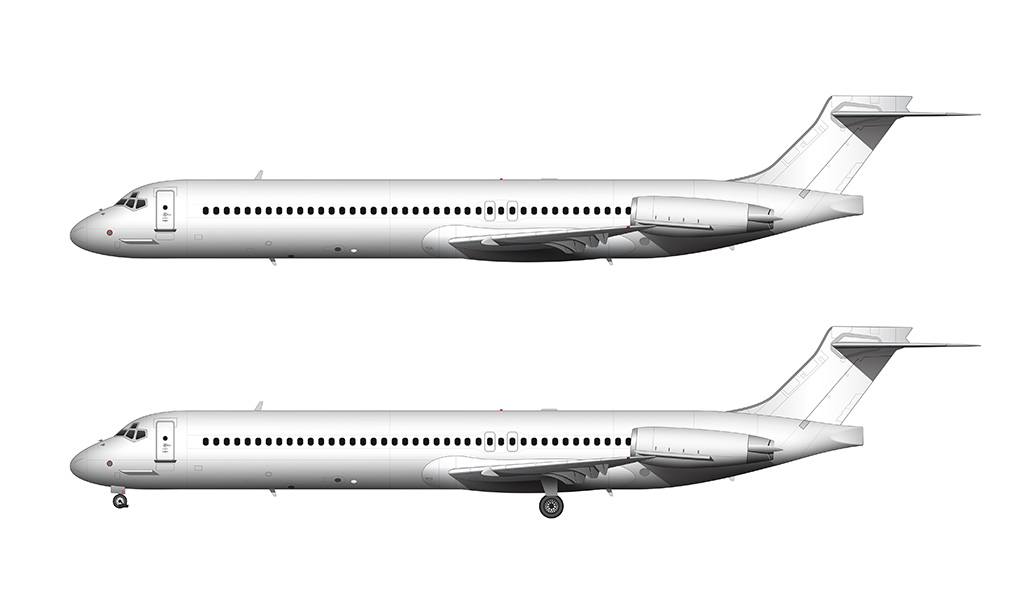
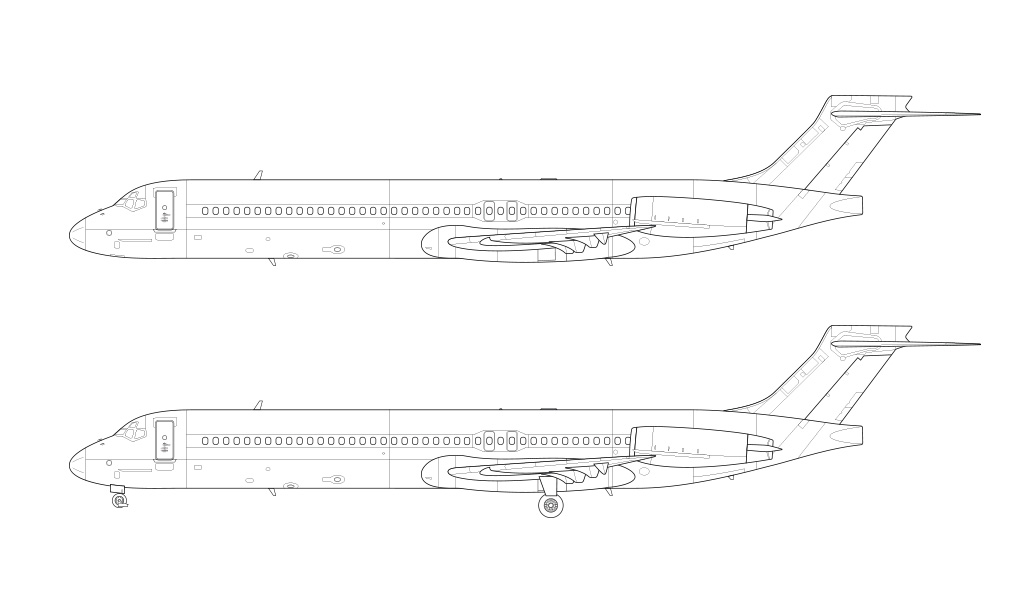

Where exactly does the MD-87 fit into the MD-80 family of aircraft?
The most difficult part about creating this specific template was trying to figure out how the MD-87 differs from every other aircraft in the MD-80 lineup. I didn’t realize it before, but even though that there are 5 main variants (MD-81, MD-82, MD-83, MD-87, and MD-88), there aren’t really all that many visual / external differences between each of them. Here’s an extremely simplistic breakdown of how different they are from one another:
- MD-81 – Essentially just a stretched DC-9-50
- MD-82 – A modified MD-81 which included the following: a flat edged “screwdriver-like” tailcone (which also became a common upgrade for most existing MD-81s that had already been built). New engines were added as well.
- MD-83 – Visually identical to the MD 82
- MD-87 – This was the shortest aircraft in the MD-80 family, which was achieved by cutting four rows of seats. In addition to a multitude of internal technical advancements, an all new 717-style vertical stabilizer was added.
- MD-88 – Visually identical to the MD 82 and 83, this model received extensive technological advancements such as an all glass cockpit.
In summary, it was only the MD-87 which looked significantly different than all of the other variants. The MD-82, 83, and 88 were visually identical, and the MD-81 was extremely close with the only visual difference being a pointed tail cone.
A brief history of the McDonnell Douglas MD-87
By far the most interesting thing about the MD-87 was how it got it’s name. Announced in January 1985 with a planned launch in 1987, the aircraft was given the “87” designation to mark the year it would enter service (which is how the other aircraft in the MD-80 series were named as well). Pretty neat, huh?
Anyway, the first flight was on December 4, 1986, and true to its name, it entered service with American Airlines on November 27th, 1987. I guess I had no idea how close this aircraft came to being called the MD-88!
The last delivery went to Scandinavian Airlines (SAS) on March 27th, 1992. There were 75 MD-87s built.
What what is it like to fly on the MD-87?
To be honest, I can’t recall if it was all that different from a DC-9 or 717. According to my personal flight log. I’ve flown on 2 different MD 87’s over the years, both with Scandanavian Airlines in January 2003.
The most notable thing about this aircraft is that it wasn’t as quiet as the MD-80 in the forward section. The MD-80 was known for being whisper-quiet when seated up front, but I specifically remember that the MD-87 wasn’t exactly the same way. This is obviously due to the shorter fuselage – and at the time I was thinking how much more interesting it was because…well…noisy airplanes are a lot more fun!
Other than that, it was hard to feel a difference from the other variants from a passenger perspective.

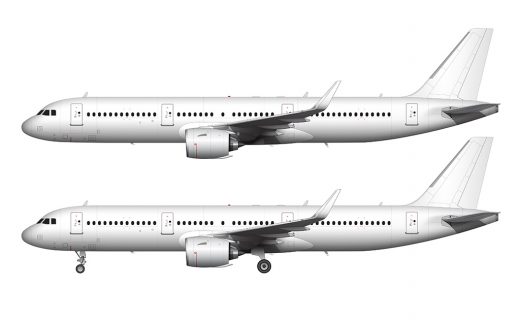
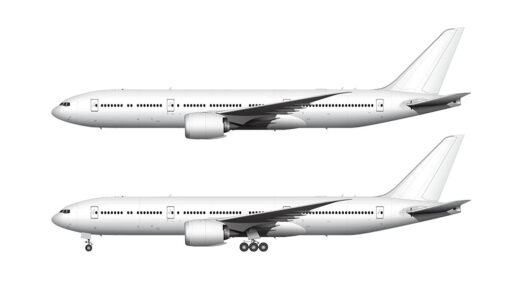
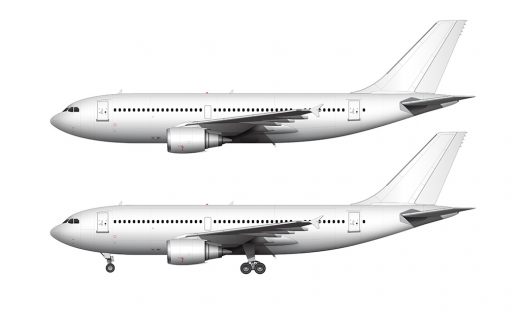
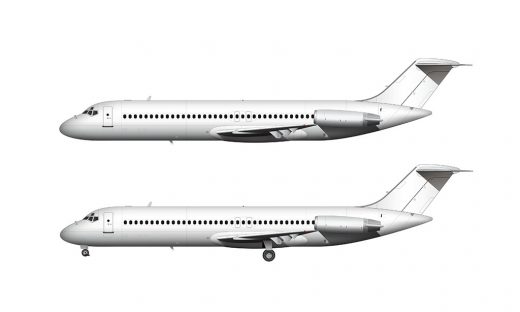
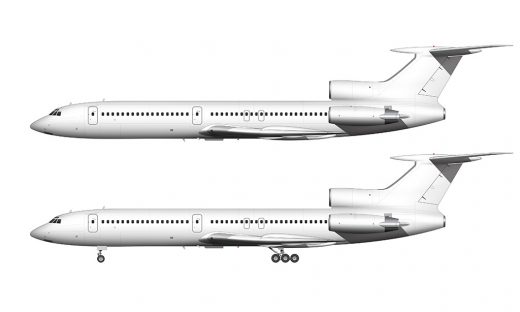
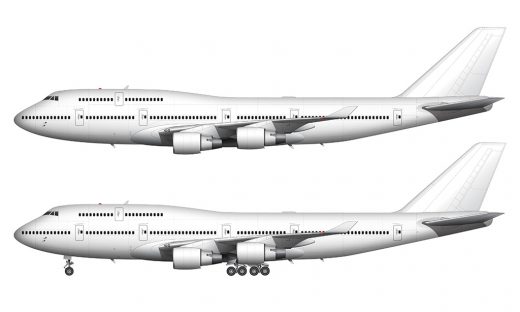
Well, you could go back and update the pre-preduction A350 templates you made (excuse my spelling)
Yeah, I need to do those as well – there just doesn’t seem to be enough hours in the day to get to everything! Haha…
Actually, this is precisely the reason why I’m not doing the 777X now. Having to go back and update it later (once the production models start rolling out) is a pain.
This made me happy too, thanks! I do like the clean wings on rear-engined aircraft.
Now maybe you could bring more joy with some of those 747s – The SP would be a nice feature.
Thanks Martin! Yes, the remaining 747 models are coming – though it’s been slow since there are so many different engine options and it’s a lot of work to illustrate them all.